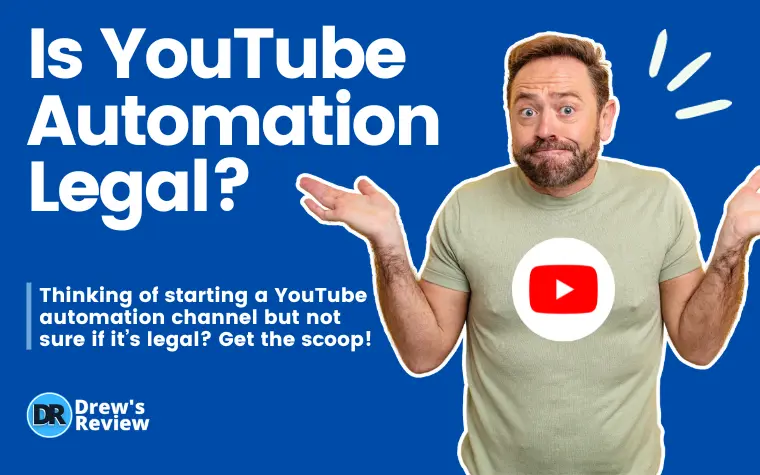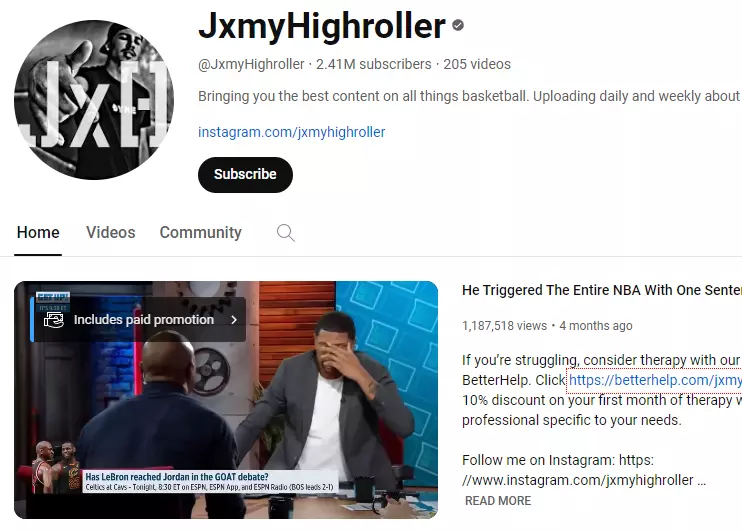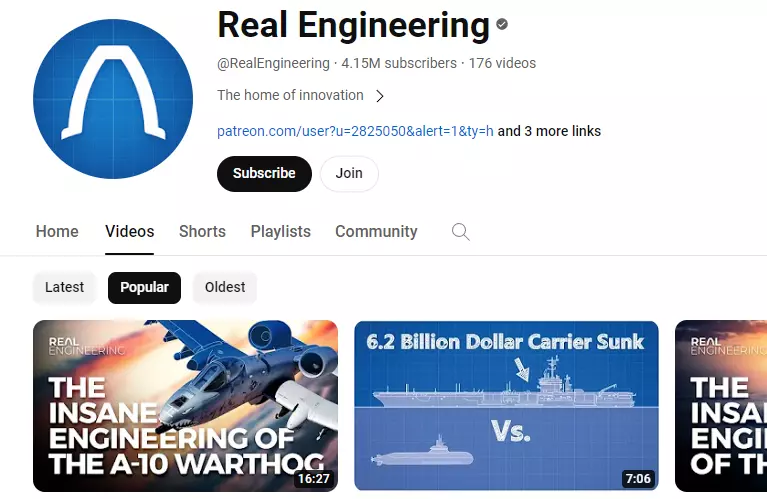
Is YouTube automation legal? Yes, it is legal but there are certain things you need to be aware of before you start a channel like this. Violating certain YouTube policies such as copyright, trademark, impersonation, fake engagement, spam deceptive practices, and scam policies can result in a channel strike or removal
To ensure the longevity of your automated channel, it is best to focus on organic growth through genuine audience engagement, creating valuable content, and following YouTube's community guidelines.
It is also advisable
to regularly review and update your content to ensure it aligns with YouTube's policies. By avoiding shortcuts and following best practices, you can protect your account from suspension and build a sustainable presence on the platform.
In this article we will discuss how to avoid suspension according to YouTube's policies, best practices on how to create safe and legal automated content, provide some examples of automated channels that do it the right way, and also some tips on how you can start your own automated channel making you great passive income.
What is YouTube Automation?
YouTube automation represents a growing trend in content creation where creators produce 'faceless videos' using a blend of existing footage, stock videos, images, and animations, rather than creating new visual content or appearing on camera themselves.
Automated videos allow for a more streamlined and efficient way of generating content, especially appealing to those who wish to maintain anonymity or lack the resources for traditional video production.
In YouTube automation, creators focus on using existing videos, images and even animation which are then edited all together. This process can be managed personally, using free video editors like HitFilm and Openshot or paid video editors like Camtasia.
There is also an option to outsource these tasks by bringing on a freelancer to do it for you. You can find these on Fiverr or Upwork. However, it's crucial for creators to navigate this process with an awareness of YouTube's content policies and copyright laws, ensuring their automated content remains both legal and compelling for their audience.
Understanding Fair Use in YouTube Automation
It's essential to clarify the concept of Fair Use, a critical legal doctrine for content creators on YouTube. Fair Use permits the use of copyrighted material without the need for permission or payment, but only under certain conditions.
These conditions include the purpose and character of the use (such as for education, news reporting, criticism, or parody), the nature of the copyrighted work, the amount and substantiality of the portion used in relation to the entire work, and the effect of the use on the potential market for the original work.
For YouTube automation, where existing footage, images, and animations are commonly used, ensuring compliance with these guidelines is vital. Creators need to evaluate whether their use of such material can be classified as Fair Use. Sometimes this can be a tricky and nuanced decision. YouTube provides resources to help understand these guidelines, but it's also advisable to seek legal advice when in doubt.
6 Ways To Avoid Suspension According To YouTube's Policies
There are a few things you need to pay attention to in order for your automated YouTube channel to not get suspended.
1. Fake Engagement Policy
According To YouTube's Policies, it's crucial to understand and adhere to YouTube's guidelines on fake engagement. YouTube strictly prohibits any artificial means of increasing views, likes, comments, or subscribers.
This includes:
To ensure your automated videos do not violate this policy, focus on creating genuine, engaging content that naturally attracts viewers. Avoid any services that promise quick increases in engagement metrics. Instead, use legitimate strategies like optimizing video titles, descriptions, and tags for discoverability.
Remember that you are allowed to ask your audience to subscribe, hit the like button, share, join your Patreon, etc. Engage with your audience organically through comments and community posts. Remember, authentic viewer interaction is key to sustainable growth and compliance with YouTube's policies.
2. Spam, Deceptive Practices & Scams Policies
YouTube's policy against spam and deceptive practices emphasizes authenticity and transparency. To ensure you don't compromise your automated channel, make sure you avoid the following:
3. Impersonation Policy
Don't upload content on YouTube if it involves:
The rule of thumb here, be original. You can get inspiration from others - just don't copy.
4. Copyright Policy
Technically, you cannot use other people's content in your videos which is exactly what you see in all automated channels. So how do they get around this? There are exceptions that allow you to use other people's copyright-protected videos. Even without permission.
This is what is referred to as fair use. You can use other material as long as you make it transformative which includes adding in your own narration, observation, or putting your own unique spin on it.
5. Trademark Policy
To avoid violating trademark policies in your automated videos, ensure that you do not use any logos, brand names, or other trademarked material in your videos without permission. This includes avoiding the use of trademarked content in thumbnails, titles, or within the video itself, especially in a way that could confuse or mislead viewers into thinking the video is associated with or endorsed by the trademark owner.
6. Harmful or Dangerous Content Policy
YouTube prohibits content that promotes dangerous or harmful activities. To comply, ensure your videos do not feature or encourage unsafe acts, self-harm, dangerous challenges, or illegal activities. Even if your content is automated, it should not contain material that could be seen as endorsing or glorifying behaviors like this.
Best Practices for Legally Safe Automated Videos
If you follow the following best practices for your automated videos, you can avoid a suspension or even worse getting banned:
Ethical Considerations in Automated Content
Are Automated YouTube channels ethical? Mostly, yes. It's quite uncommon to find these channels crossing ethical boundaries.
Ethical Dilemmas in Using Automation for Faceless Videos
Using automation for creating faceless videos can present some dilemmas such as:
- Originality and Creativity: Over-reliance on automation may lead to content that lacks originality and creative expression because it involves repurposing existing media.
- Transparency with Viewers: There's an ethical concern if creators are not transparent about the automated nature of their content, potentially misleading viewers about the origins and creation process of the videos. However, many viewers are now accustomed to automated videos so this becomes less and less a concern.
- Intellectual Property Rights: Ethical challenges could possibly arise in ensuring all automated content, like stock footage and music, is used in accordance with copyright laws and fair use guidelines.
- Quality vs. Quantity: The temptation to produce high volumes of content quickly can lead to a compromise in quality, raising questions about the value and integrity of the content created by the channel's owner.
- Viewer Trust and Misrepresentation: There's a risk of eroding viewer trust if the channel falsely represents automated content as entirely original or personally crafted by the creator. Where possible, give attribution to the original owner of the media.
3. Examples of Successful Automated YouTube Channels from a Legal Perspective
This article wouldn't be complete without giving you some examples of automated channels that are successful and obviously - legal.
1. FactsVerse
Factsverse is an automated channel that has grown to just over 9 million subs. According to the owner, he is making around $100K a month on this channel. Its focus is on pop culture, TV shows and celebrities. It leverages pre-existing content, complemented by a narrated voiceover.

2. JxmyHighroller
This creator created an automated channel around basketball. He has grown this to over 2.4 million subscribers. Even using footage from actual basketball games seen on TV, he has had no legal issues with copyright whatsoever. He's doing quite well do, making at least $20-30,000K a month in passive income. Not too bad for never having to go on camera!

3. Real Engineering
Real engineering is a channel that has videos on how things are made. It includes videos on the Space Shuttle, Telescopes, Japan's Maglev train and more. The channel uses stock imagery and existing footage with a voiceover narration.
One of their videos reached a staggering 17 Million views. Clearly, they are doing something right - and completely legal! You don't even need to be an engineer to create a channel like this. Just do your research and find some footage.

Is YouTube Automation Worth it?
Yes, YouTube automation is totally worth it. I can base this just on the 3 highly successful YouTube channels above alone. If you're feeling really lazy, you can check out these faceless copy&paste YT channel ideas for more inspiration.
Really, just getting in front of a camera and talking is one of the easiest things you can do on YouTube. However, many people just can't stomach the idea of going on camera.
That's why YouTube automation is so perfect. They can make a lot of money and you'll never have to reveal your identity.
Are Automation Tools Legal?
Automation tools like TubeBuddy or VidIQ are fine to use for your faceless channels and don't violate any of YouTube's rules. They help you automate the process of finding keywords, optimizing titles, finding the right tags, etc. without having to do any manual work.
Automated tools like bots, and software that adds fake likes and subs are not allowed.
Is YouTube Automation Legit?
Yes, YouTube automation is legit. The many successful channels I have given you as examples prove that. If it wasn't legit, these channels could not exist, let alone have millions and millions of views and subscribers.
What's The Best YouTube Automation Course?
In my opinion, it's Matt Par's Tube Mastery and Monetization.
I think he's the king of YouTube automation because not only does he have a wildly successful course, but he runs 9 profitable automation channels himself. These channels make him over $30K a month.
For more course options, check out these YouTube automation courses.
👉 Want some free YouTube Automation training? Sign up for this webinar and see how it's done.
Conclusion - Is YouTube Automation Legal?
After all the information I have given you in this article and the example channels as well, you can see that YouTube automation is totally legal.
You could run into trouble if you do it the wrong way, but as long as you abide by the rules of fair use, you should be fine. Many channels are killin' it. There's no reason you can't.
So what's next?
If you're serious about learning YouTube automation - invest in yourself and get proper training.
Related Articles
- Best Ways to Make Passive Income on YouTube - April 15, 2024
- How I Make Faceless YouTube Channels With AI - April 9, 2024
- Top 21 Faceless YouTube Niches to Earn Big Profits in 2024 - April 3, 2024
